Recently we were asked to create a temporary commercial display container garden for the sales area of a new apartment building project called ‘Patch’ in Fitzroy North, Melbourne. Although ‘Patch’ has a range of apartment sizes, it includes a higher than usual percentage of three-bedroom family-focussed apartments. The Patch building, due for completion in late 2017, will have a 4 star ESD rating (Ecologically Sustainable Development).
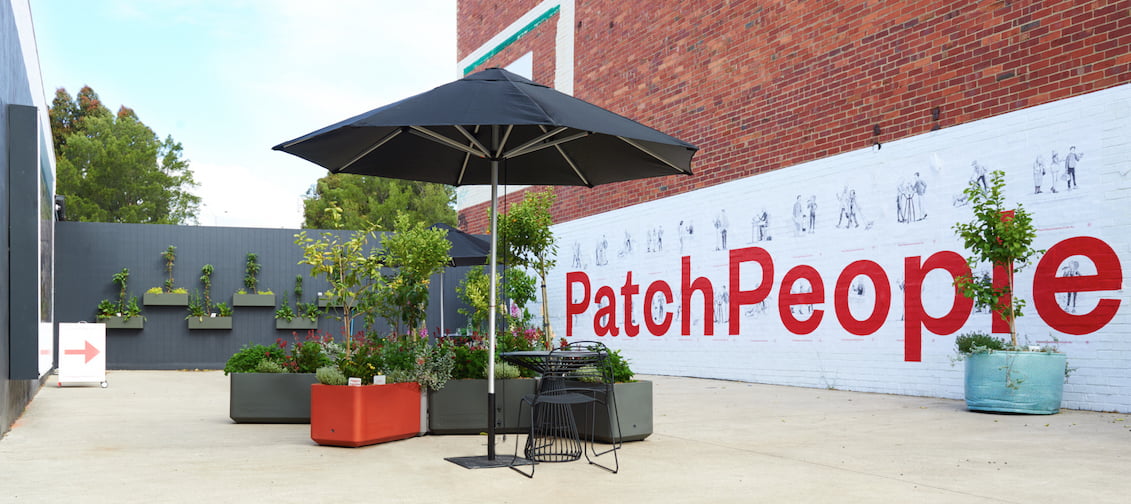
Our garden for Patch. Design Phillip Withers. Photo courtesy Wulff Properties
Getting ‘local and vocal’ is something I think is important so the team and I were keen to be involved in a project near our studio that steps away from the usual slick-style, modern apartment sales and marketing campaign. For ‘Patch’, this even means no offshore promotion to encourage a high percentage of sales to those already living in this area.

Patch commercial garden Design Phillip Withers
The team and I were asked to help build up the sustainable message from first arrival, so we decided to green up the sales area with plenty of plants and create an appealing entrance to the space, prior even to a single wall going up. Our brief was to create a walk-through garden using ‘Urban Commons’ modular planters and benches to show what the community terrace spaces could be like, with plant life that was sustainable and useful, yet still elegant.
To the faint hearted it would have seemed like a ridiculous request, but that’s something that we relish the opportunity to indulge ourselves in…

Installing the Patch garden in the sales area entrance
The directors of this new project were keen to push edible ‘foodscape’ gardening and so were we. We wanted to create a garden where you can grow food as well as maximize space, even within a such a small development, and show the community and potential buyers just what they could do within their new urban home or communal terrace areas.
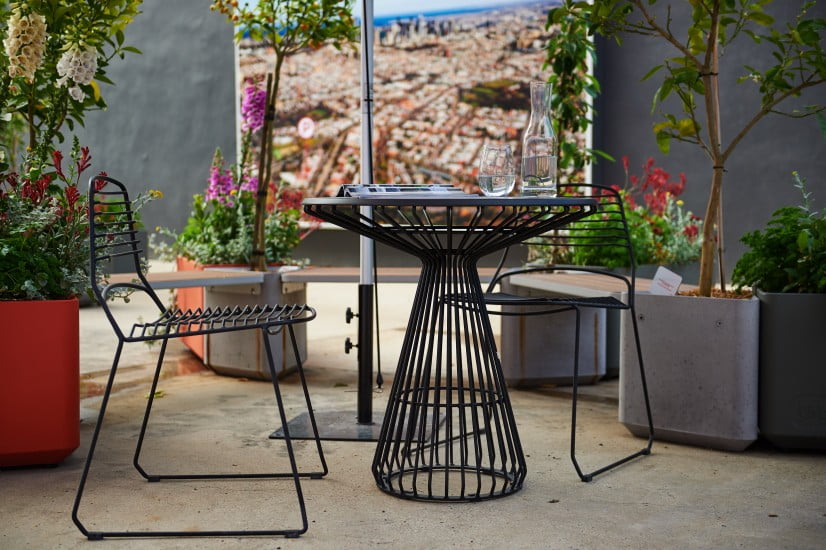
Photo courtesy Wulff Properties
Our first focus was on working to have as many edibles as possible. As a commercial container garden like this has to look good for the entire sales period, it’s important to know what plants will hold up well, as well as including the required large portion of herbs and various vegies. Being experienced show garden builders, we knew to choose robust plants that would be good to eat but also look quite architectural and fun such, as Tuscan kale and silverbeet.
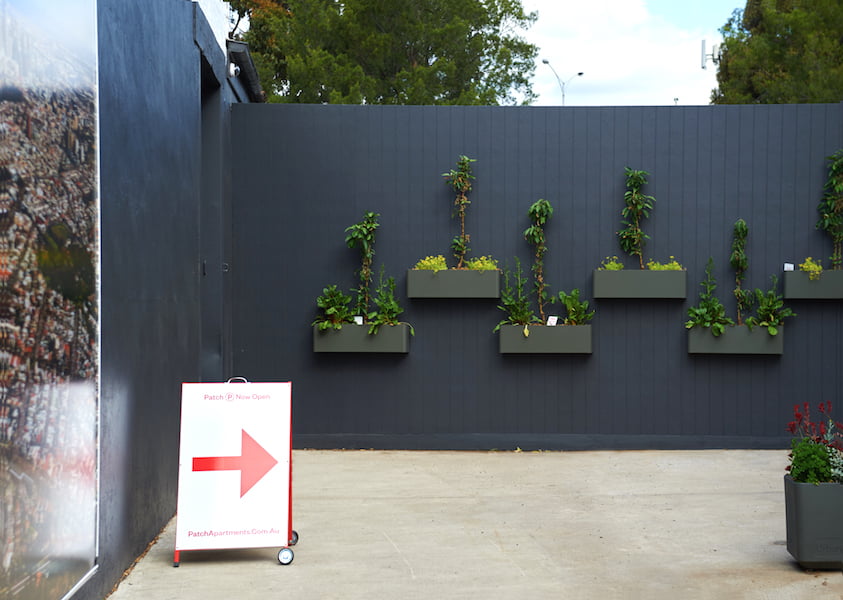
Using funky columnar apples in the temporary wall garden. Photo courtesy Wulff Properties
Above the herbs and veggies we created an upper canopy full of both fruit and other useful kitchen plants, using citrus like lemons and limes, and other trees such as bay laurels, feijoas and some funky columnar apples and olives.
Finally we wanted to infuse the garden with a whole heap of flowers, partly to get the bees into the space to activate the garden, but also to get great seasonal interest, provide a flower-picking garden and make a space that everyone would want to be in.
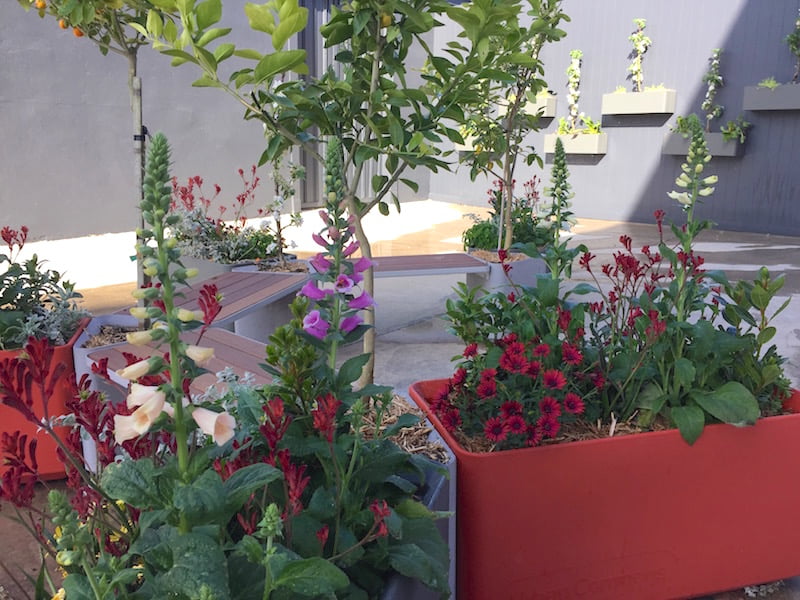
Lots of hot colours with pops of bright pink. Patch commercial garden Design Phillip Withers
We formed the garden in two parts. The first was the warm garden, with pops of rich colours like white, yellow, orange, hot pink and red. The warm garden filled the central area so that it would create some punch and ‘wow’ factor. The plants we chose included edibles such as chilli, dwarf lemons, strawberries, brightly coloured silverbeet varieties, dwarf bay laurels and highly fragrant chocolate mint. Then came the flowers, with kangaroo paw, African daisy, foxgloves and golden buttons adding plenty of colour.
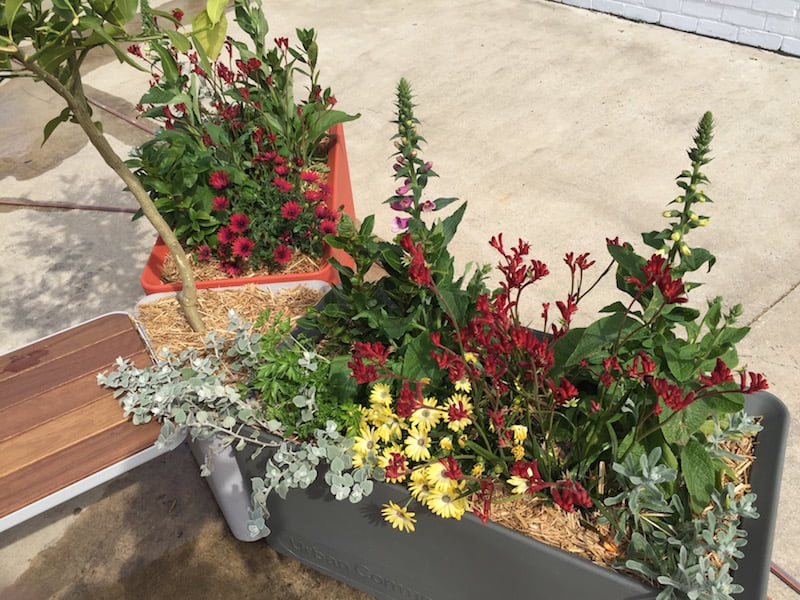
Patch commercial garden Design Phillip Withers
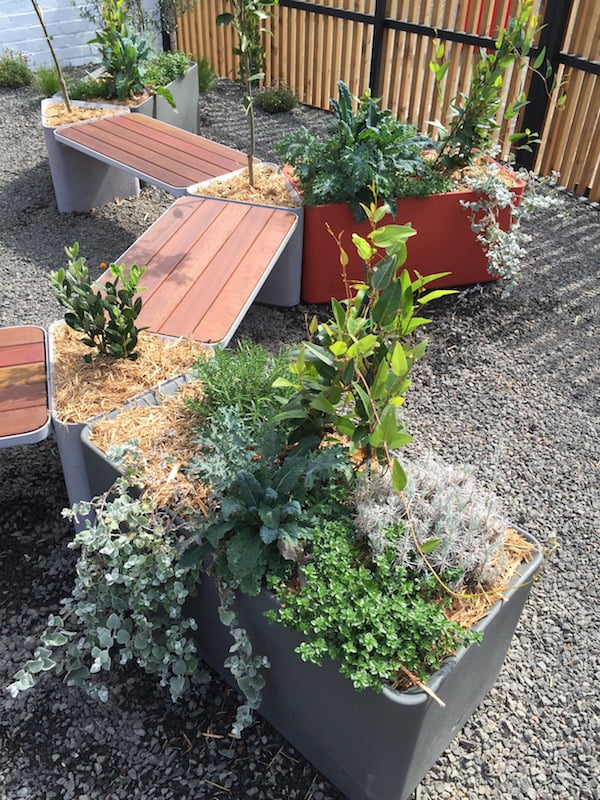
Patch entrance garden with cooler blues and grey. Design Phillip Withers
The second space was the blue area, focusing on quieter blue hues and hints of white and purple which would all work together harmoniously. The aim was to make a soothing blue-themed entrance that also included some native plants so you felt the space was one to wander in, and unwind. Again we started with useful edibles in this area like dwarf bay tree, kale, rosemary, thyme and oregano. Then we added the flowers, such as native daisy (Brachyscome), happy wanderer (Hardenbergia), lavender, westringia and fanflower (Scaveola), some grey and blue foliage plants like blue fescue, liquorice and curry leaf plant (Helichrysum spp), and also native lomandra and spear grass (Austrostipa).
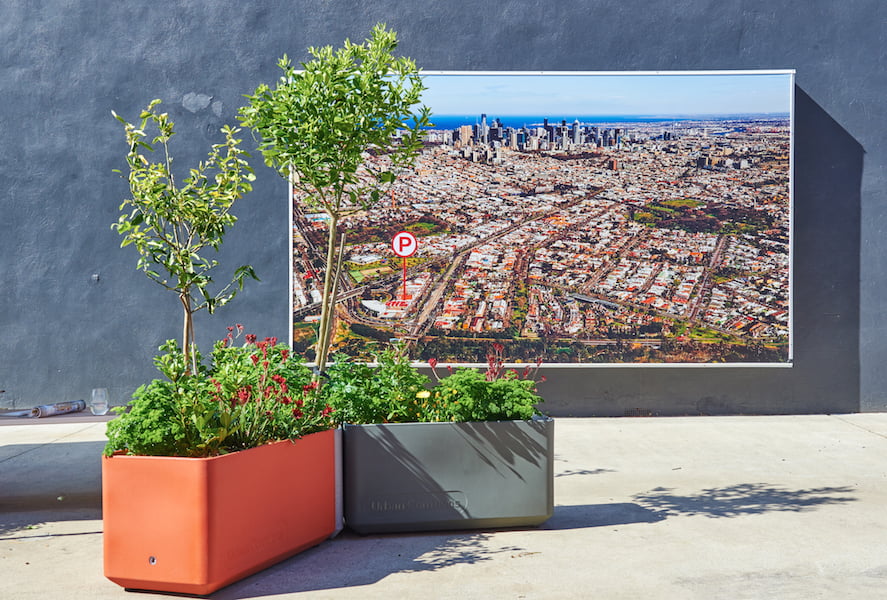
Photo courtesy Wulff Properties
Projects like this show how well-planted small container gardens can really transform even a temporary commercial space. By using a combination of edible and colourful plants we created a garden that we hope will fire up the imagination of prospective family buyers about what living here could be like, in a sustainable urban apartment that incorporates attractive communal and plant-filled spaces.
[Credits: photographs by Veeral; Parade Projects P/L]
